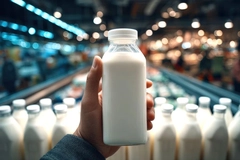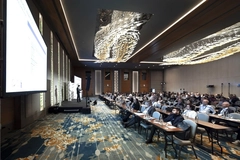Life cycle assessment reinforces corrugated packaging industry’s “sustainability leadership”

10 Oct 2023 --- A newly released life cycle assessment (LCA) by the Corrugated Packaging Alliance (CPA) has shown “substantial reductions” in the environmental impact of corrugated cardboard boxes, with a 50% per unit reduction in GHG emissions observed between 2006 and 2020.
The report highlights that the corrugated packaging industry achieved meaningful reductions in ozone depletion (13%), energy usage (13%), water usage (18%), acid rain (41%), smog (44%), respiratory effects (54%) and eutrophication (30%), which leads to algae blooms and dead zones in bodies of water.
The study analyzed the cradle-to-grave lifecycle of an average corrugated cardboard box produced in the US in 2020. Assessment was based on information from 51 containerboard mills representing 69% of 2020 US containerboard production and 402 converting facilities representing 57% of overall containerboard converting production volume for 2020.
The LCA, performed by Anthesis and the National Council for Air and Stream Improvement with third-party review by the Athena Institute, assessed impacts on land, air and water, considering the sourcing of materials, manufacturing, distribution, usage and end-of-life stages.
“[Environmentally] sustainable practices are at the foundation of the paper and wood products industry,” remarks Heidi Brock, president and CEO at American Forest & Paper Association.
“Our industry has a long track record of sustainability leadership, and we are committed to making continued progress on quantifiable sustainability goals as part of the Better Practices, Better Planet 2030 initiative.”
 According to CPA, CO2 reduction via a dual approach maximizes fiber reuse and promotes circularity within the industry.Science forward
According to CPA, CO2 reduction via a dual approach maximizes fiber reuse and promotes circularity within the industry.Science forward
CPA details that the corrugated packaging industry’s achievements in environmental impact reduction were made possible through various measures, including energy efficiency improvements, investments in sustainable forest management and a shift toward cleaner-burning fuels.
The introduction of fresh fibers from sustainably managed forests helps remove CO2 from the atmosphere, while the use of old corrugated containers has contributed to avoiding CO2 and methane emissions from landfills. This dual approach maximizes fiber reuse and promotes circularity within the industry.
“Reducing carbon emissions is the most important thing we can do for a more sustainable future,” says CPA executive director Bob McIlvaine. “Additional improvements in land, air and water indicators highlight the industry’s progress and reaffirm our longstanding commitment to sustainable manufacturing across operations.”
CPA emphasizes that the corrugated industry remains committed to environmental sustainability through science-based goals and innovation, aligning with global efforts to address pressing environmental challenges.
Life after LCAs
At this year’s Packaging Innovations trade show in Birmingham, UK, Packaging Insights spoke to Paul Foulkes-Arellano, circularity educator at Circuthon Consulting, who said we have entered “a post-LCA world.” We discussed the absence of cardboard and paper packagers in the halls.
“A lot of the big packaging companies are probably so busy they aren’t exhibiting, and I would say that is more on the paper and pulp side — probably because they are in huge demand,” he remarked. “If you look at the guest list from three years ago, a lot of them aren’t here anymore.”
“What is interesting is if you look around the predominance of plastics companies. Why do you come to a show unless you want to sell and that suggests that they are struggling to sell,” says Foulkes-Arellano.
By Radhika Sikaria











